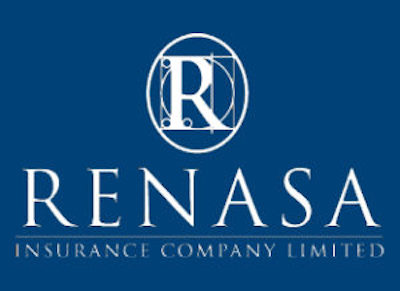
The march of progress is relentless for both direct and indirect insurer alike… but what about the broker? A new tech offering from Renasa, home of the independent broker, is promising brokers the same speed, seamlessness and service clout as a direct insurer.
Financial services journalist Katya Stead spoke to Michael Clack, General Manager, Business Development and Herman Scheepers, General Manager, Risk and Technology at Renasa, to find out more.
Katya: Technology forms the backbone of the whole insurance value chain. From an insurance point of view, what role does Renasa see technology playing in this value chain?
Herman: Technology is indeed the backbone of the entire insurance value chain nowadays – and it’s becoming more and more important in the broker value chain, specifically. Technology has become the main mechanism by which we all communicate with each other, be it policyholders to brokers or brokers to insurers, especially if you consider the current remote working environment we find ourselves in, which many believe will become a norm.
Policyholders expect a seamless process from insurers and brokers alike. Excellent service is expected as standard, regardless of the circumstances. The only way to ensure this is to have a proper deployment of technology. In the broker value chain, it’s very important that information is placed in the hands of the broker. Today’s consumer wants the information as quickly as possible, they don’t want to wait for feedback that is passed through a broken telephone, from insurer to broker to policyholder. That’s not always possible, because you have many stakeholders involved – especially in the claims process. In the general decision-making process, though, if we optimise the process of exchanging information, the broker can be as efficient in communicating with clients as a direct insurer is.
Then, in the regulated environment that we find ourselves in today, TCF, PPR and FAIS compliance are all becoming more and more stringent. The only way to ensure compliance at all times is proper systemised processes. When it comes to cost efficiency and fee regulation, it’s important that we eliminate any duplication of processes and any unnecessary manual intervention between insurers and brokers. This optimises the process in terms of cost as well.
If we optimize these things through technology and combine with the personal relationships brokers have forged with their policyholders, I believe that is the best offering that a consumer in the short term insurance market can ask for at this stage.
Katya: Of course, often the brokers point of view on the ground is quite different to the insurers, what feedback do you receive from brokers on the main technology deliverable they expect from an insurer?
Michael: Brokers need solutions to match real time situations and they’re looking at technology to deliver this. In an environment that is currently driven by artificial intelligence and machine learning, data mining should give real time answers, even on complex decisions. I think that’s the main deliverable that brokers are expecting. They’re also looking for reliable information, portfolio performance and portfolio production information – such as the trends, how new business is coming on, policy counts, average rates and premiums.
Herman mentioned the cost issue. I think technology can offer a solution to the brokers cutting costs and operating maybe even more efficiently while working away from the office, etc.
Brokers are also looking for innovation, always investigating ways to be at the forefront of data mining and technology and always researching better ways to engage. Brokers want to maintain their independence to ensure that the best possible service is delivered to their clients. And technology is the new way of delivering this. I believe that, post-COVID, we’ll see a greater reliance on technology.
Katya: How would you say Renasa delivers on these, especially since there’s such a diverse variety of broker administration platforms out there for brokers to choose from?
Herman: It’s always been Renasa’s approach to respect the independence of a broker and the way that a broker wants to work within his own office. So, we’ve taken a technological stance on integration with broker systems. We spent a great deal of time and effort on the data exchange between systems of the broker and ourselves and integrating with the way they work. This way, when it comes to policy administration, we have rate engines integrated with the broker system, integrated data extraction systems and integration with our claim system. This avoids duplication of work. Where that integration is complete, as is the case with the most common broker systems, information is seamlessly uploaded into the Renasa system and seamlessly written back to the broker system, so that the broker sits with information at hand. Brokers are very interested today in the performance of their own portfolio and in trends and analysis. The broker wants that information at hand.
Specifically, Renasa’s approach has always been cloud-based systems. So, where we do deploy a system to a broker – for example, our claims system – we have taken the view that the future will be through a web-based system. In the future, all parties can have access – be it the broker, the client, us or the service provider- anywhere, anytime, from any device.
Katya: When it comes to giving brokers access to these latest facilities, how do you ensure that they run an efficient and profitable business in terms of what Renasa’s technology provides? How do you actually provide that access?
Michael: I think a big thing that we’ve always offered is flexibility. By having this system integrating with the broker’s office, there’s no big change for the broker. They can operate as they normally do with no interference, so to speak, from the insurer; and we can offer backend support. As well as maintaining a compliant environment for the brokers to operate, as compliance has become a very big focus in the industry today.
`
From the broker’s perspective, our offering changes the game. Renasa offers the same technology as, for example, a direct insurer – the same rating and claims service. That’s what our technology does, it bolts into the broker’s system. For example, if a broker needs assistance to pass a discount above what he is mandated to, our portfolio managers are able to pass that additional discount on domestic policies via their cell phone, by dialling into our rating engine and approving the discount required to win the business. This maintains the broker’s competitiveness.
As for claims… No matter what system the broker is using to administer business, the broker can load a claim on the broker system and it’s integrated into our system virtually immediately. No more waiting overnight, or over a week. As a broker loads a claims payment, the payment reflects in his system. So, you know that when we talk about a portfolio performance, we’re on the same page – the broker is not sitting on one page and we’re on another. When the information is integrated, it’s all the same.
Another important thing that we deliver is key performance indicators that manage and measure the key drivers in the portfolio in terms of premiums, rates, claims listings and daily claims reports. We always say that ‘if you can’t measure it, you can’t manage it.’
Our technology enables the broker’s business on all facets of the insurance value chain so that they can be, so to speak, ahead of the game.
Katya: Something that the insurance industry has been accused of in the past, is that we don’t necessarily move with the times, especially in terms of the platforms that the average person uses. Where does the customer experience fit in here?
Herman: The future way that a customer will judge service is going to be a combination of technological experience and the personalised service that he gets. Consumers want access to information, they want to feel in control. But at the same time, they never want to feel like they’re dealing with an impersonal system. The days of IT departments working separately from the businesses are long gone.
Michael: Another big focus is that the human touch is never to be forgotten. The technology has been developed for us to maintain our motto of being the broker’s best friend. We can’t be that if we are lagging on the technology side. Changing the game and giving our brokers the technology and the tools to ensure that they can out compete all others in an ever-changing world – that’s been the focus of our technology offering.



